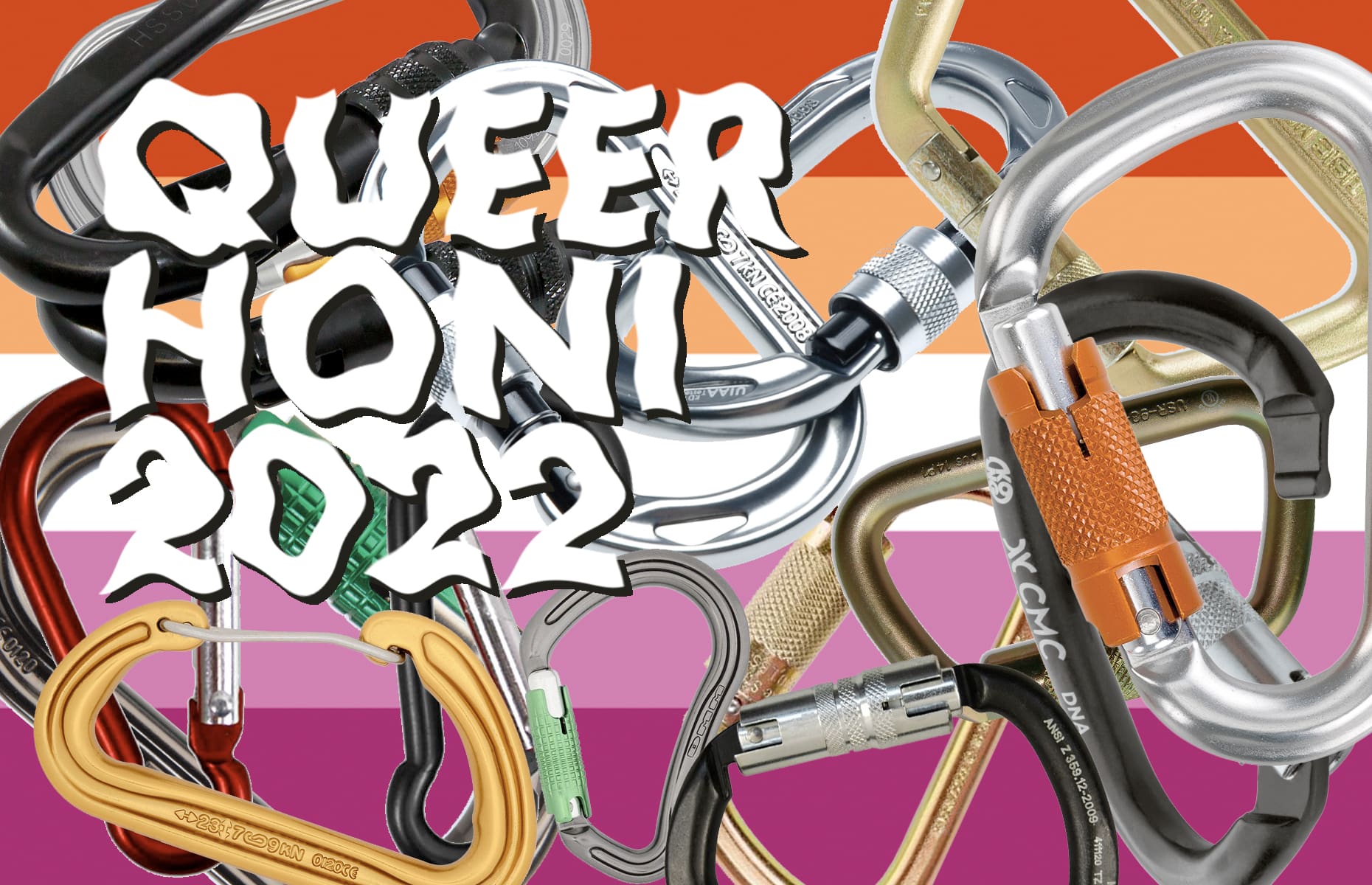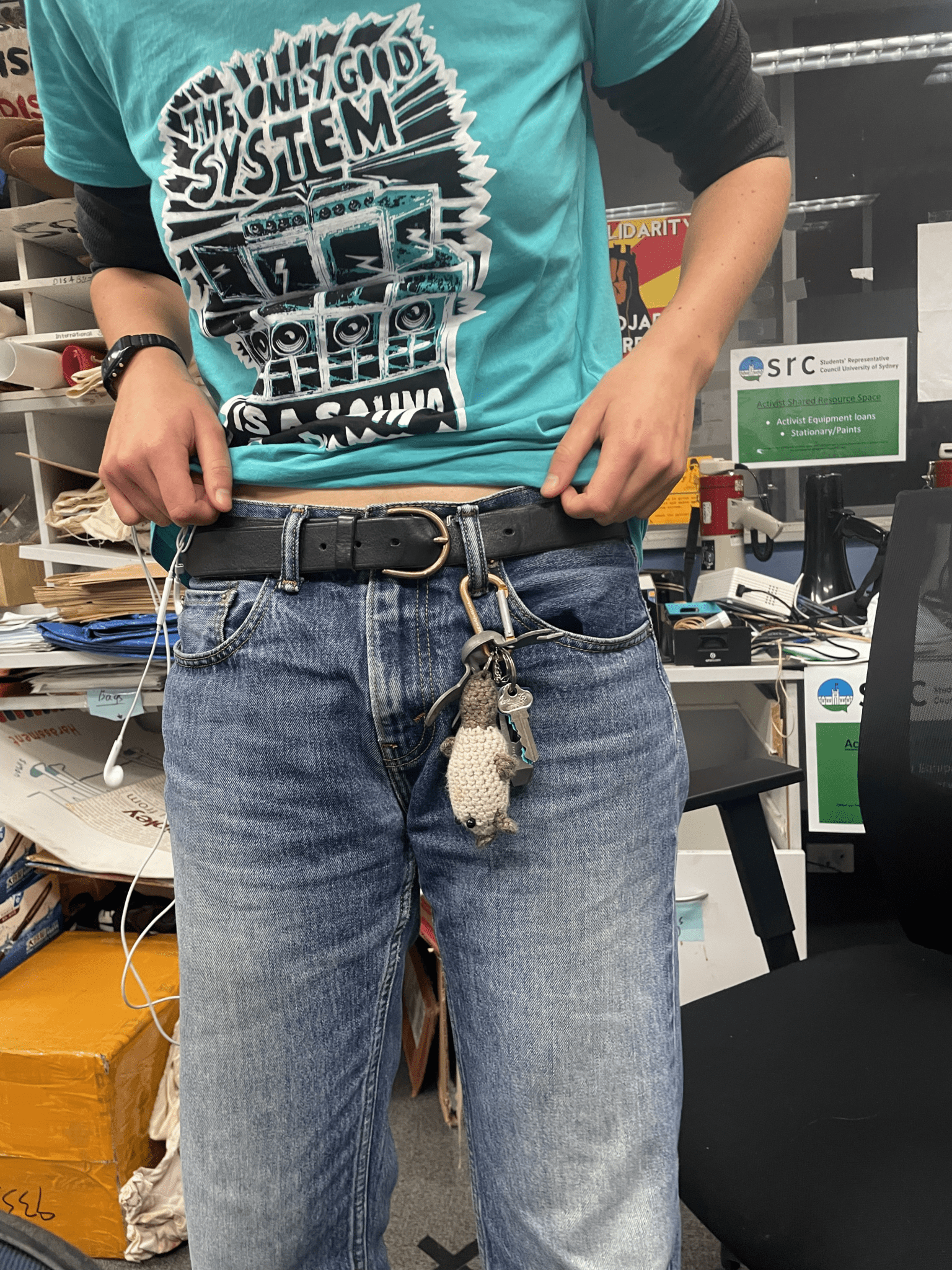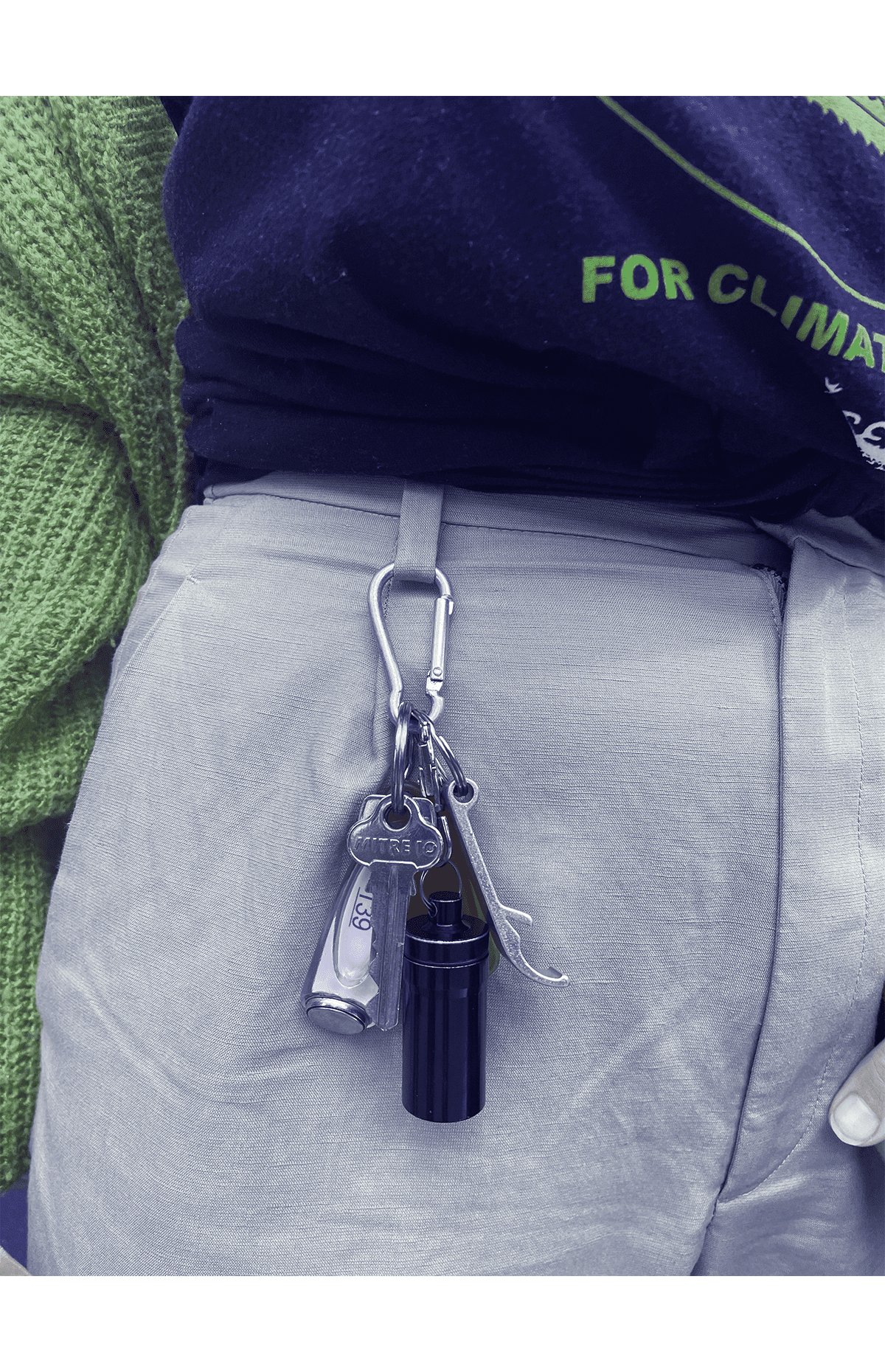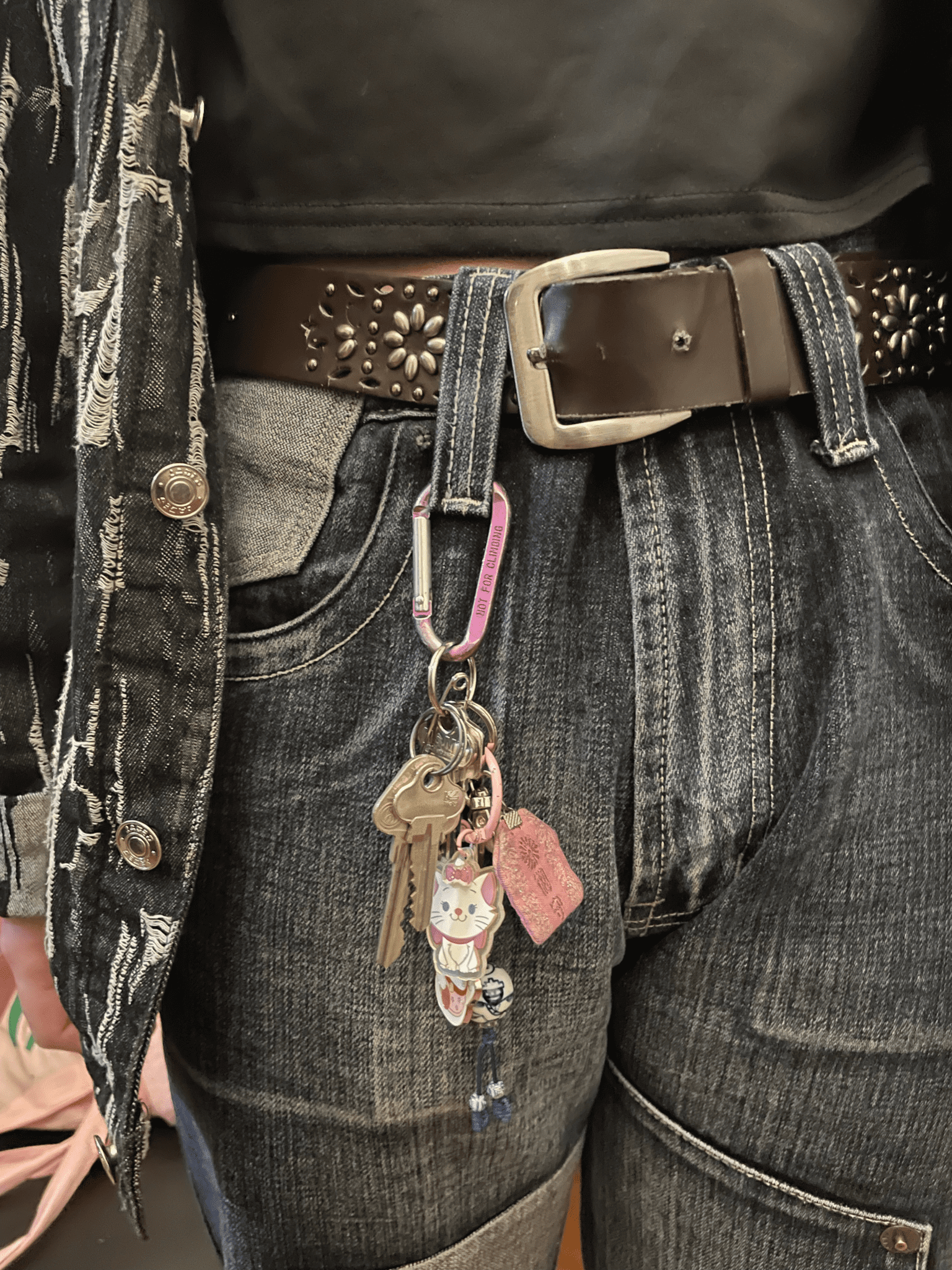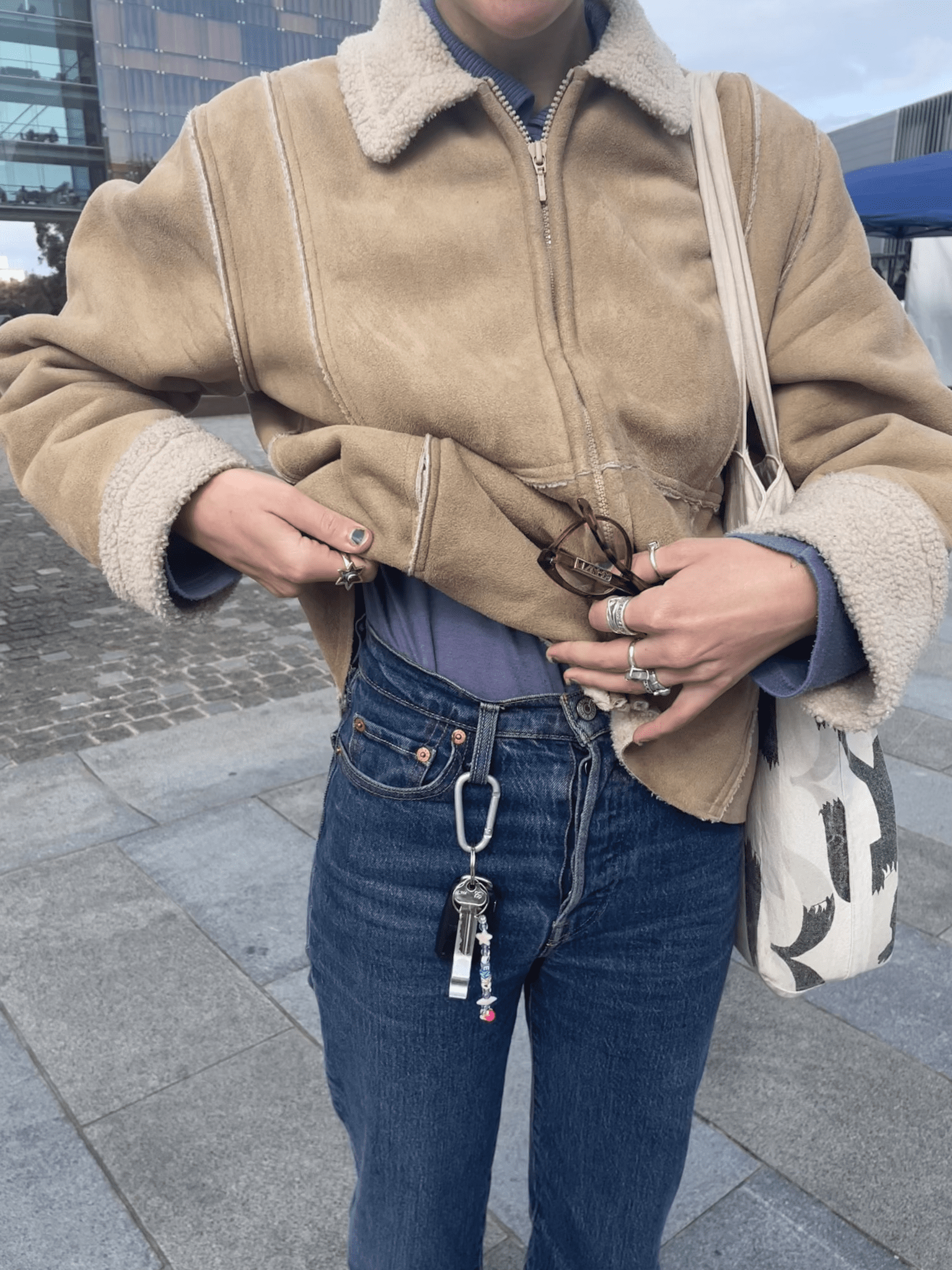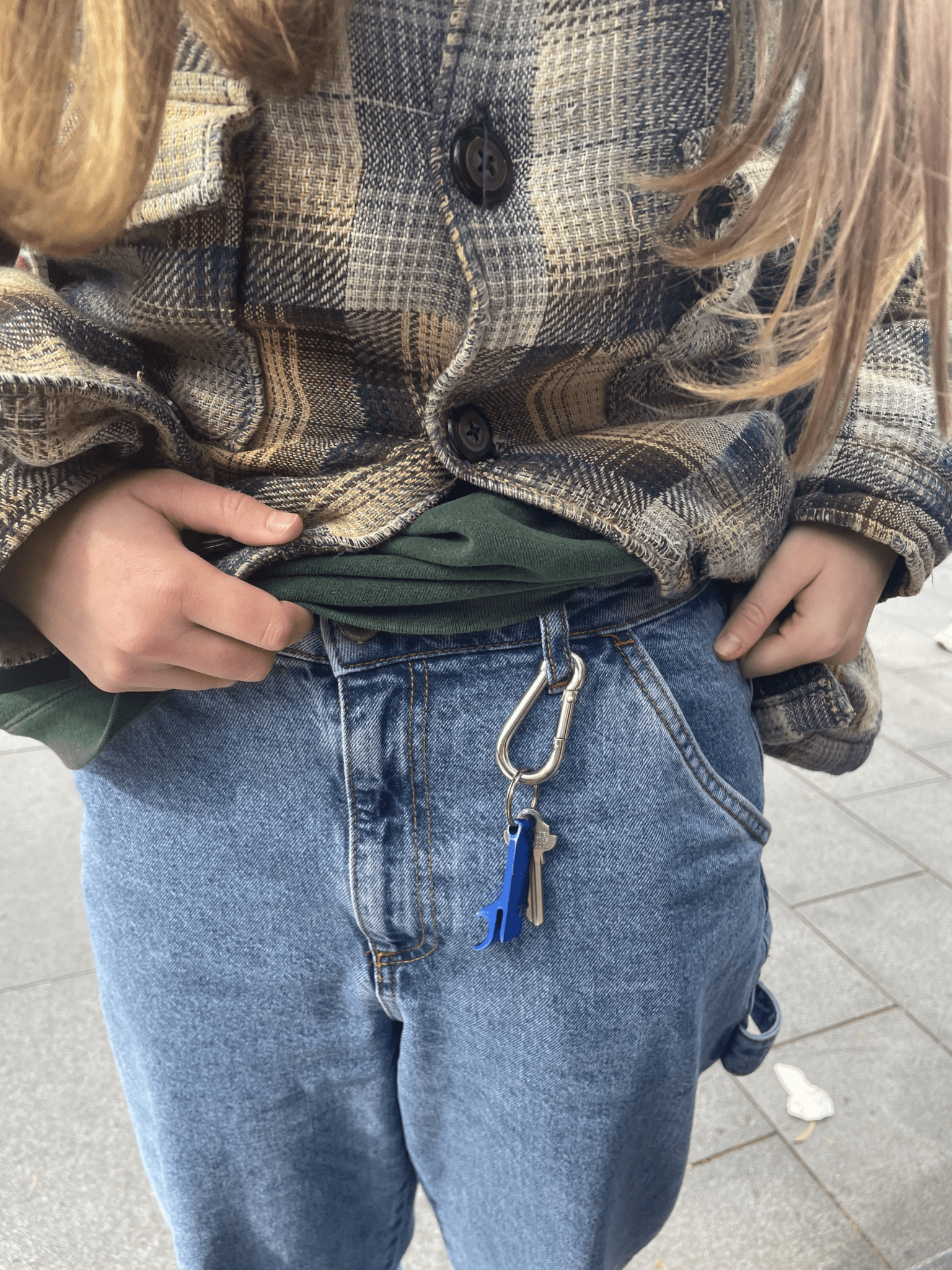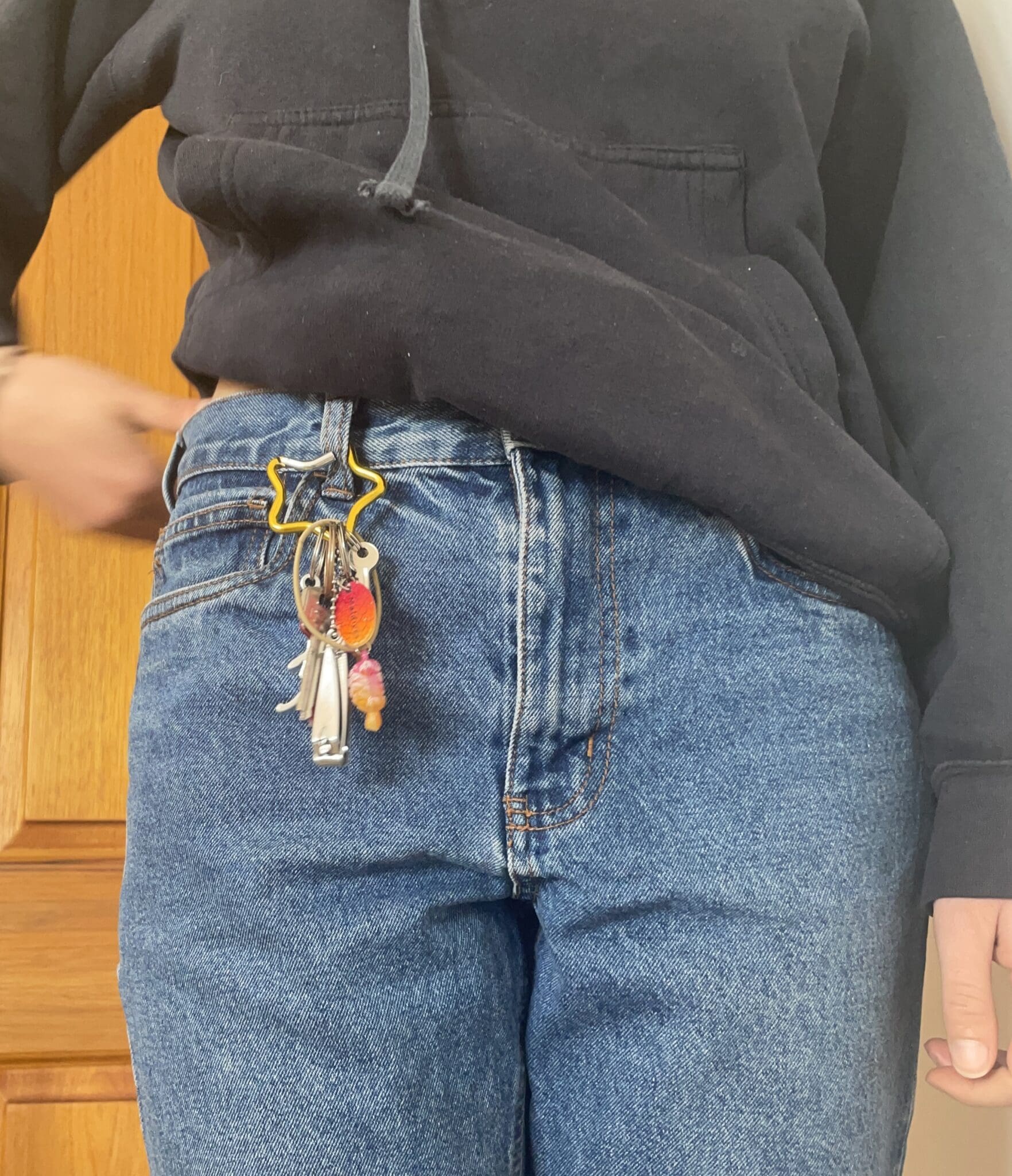The carabiner. An iconic accessory for lesbians and queers all around. An enduring symbol of queer aesthetic. Practical, understated, subtly provocative.
If you’re reading this and thinking “What!? My carabiner is gay!? Since when!?” Congratulations, you may have just found out that you’ve been appropriating queer culture . Accusations of appropriation aside, your carabiner does have a history carved by butches, and if you’re waking up every morning and latching your keys to your pant loop, in a limp wrist way or not, then consider this article to be a required reading.
Butches and their carabiners: a match made in blue collar workplaces.
The lesbian history of carabiners is one that originated from the entrance of American women into the labour force during WWII. During this time, butches, masc women and gender non-conforming lesbians were more likeley to work “masculine” jobs, with many finding employment as janitors and delivery and postal workers. The carabiner originally served as a utilitous and functional accessory, with these jobs requiring workers to have easily accessible keys. While the carabiner served as an accessory of purpose, it also came to symbolise the sexual oreintation and identities of these people. Over time, employment patterns changed and the carabiner became detached from its blue collar origins. However, its status as a lesbian accessory remained, and established it as a device utilised by queers to subtly signal their sexual orientation to each other. And so, with thanks to the butches, carabiner flagging was born.
More than just a fashion choice, the carabiner originated as, and continues to endure as a tool used for queer visibility and identification. After uncovering the history of carabiners, I became hungry to understand their present, so I took to the streets (Eastern Avenue), on a mission given to me by Sappho herself: to locate the campus carabiner queers, interview them, and maybe, just maybe, strengthen queer solidarity on campus.
To clip on the left or to clip on the right? That is the question.
As a central object within the lesbian imagination, most queers know that to spot someone wearing a carabiner, or to wear one themselves, is an attempt to assert one’s identity. In queer theory, to wear a carabiner is to perform sexuality, gender and identity all in one. But does where you place your carabiner matter?
According to the majority of queers I interviewed on campus, the choice to wear their carabiner on the right or on the left was a matter of dexterity, function and ease.
“I always wear it on the right. I think that’s because I’m right handed and it’s dexterous”, one interviewee, Eva, said.
This presents an interesting diversion from original carabiner code within which the sides *did* matter, as they were representative of the wearer’s sexual position preference; left for top, right for bottom and hung off way to the side on a hip loop for switch.
All campus interviewees were unaware of the sexual semiotics associated with wearing their carabiner on a specific side, with only one individual, Alana, ackolwedging the sides as having some form of meaning, saying “I know that the sides mean something but I don’t wear it on my side intentionally” .
This absence of sexual subliminal is aligned with recent patterns of carabiner usage where, as Christina Cauterucci describes, ‘the semiotics of the carabiner have largely been divorced from sex for today’s lesbian’. So, while the carabiner maintains status as a symbol for queerness, it can’t always be considered an accurate representation of sexual preferences, with the majority of queers today unaware of this element of carabiner flagging.
Carabiners and the straights:
The hetero-ification of the carabiner.
The loss of the sexual code within carabiner wearing can be seen to be tied more broadly to the integration of the carabiner within mainstream (non-queer) fashion and trends, leading to the deradicialisation of the accessory itself. The carabiner has become adopted as a (non-political) accessory for the straights, becoming an expendable, convenient and trendy object, with many of its wearers oblivious to its queer roots.This was represented within my interview process, as I encountered many straight (derogatory) carabiner wearers who were totally unaware of both its queer history and present. Frustration at this ignorance was expressed by queer carabiner wearers.
“I don’t necessarily think it (carabiners) should be queer exclusive, but I wish more people knew about its queer history. I feel like a lot of queer fashion gets appropriated into the mainstream without people understanding the importance of certain clothing or styles”, Jay told me.
While the majority of queers I interviewed were not advocating for carabiners to be queer exclusive, they were advocating for non-queer carabiner wearers to at least be aware of the object’s history, meanings and relevance within queer culture.




